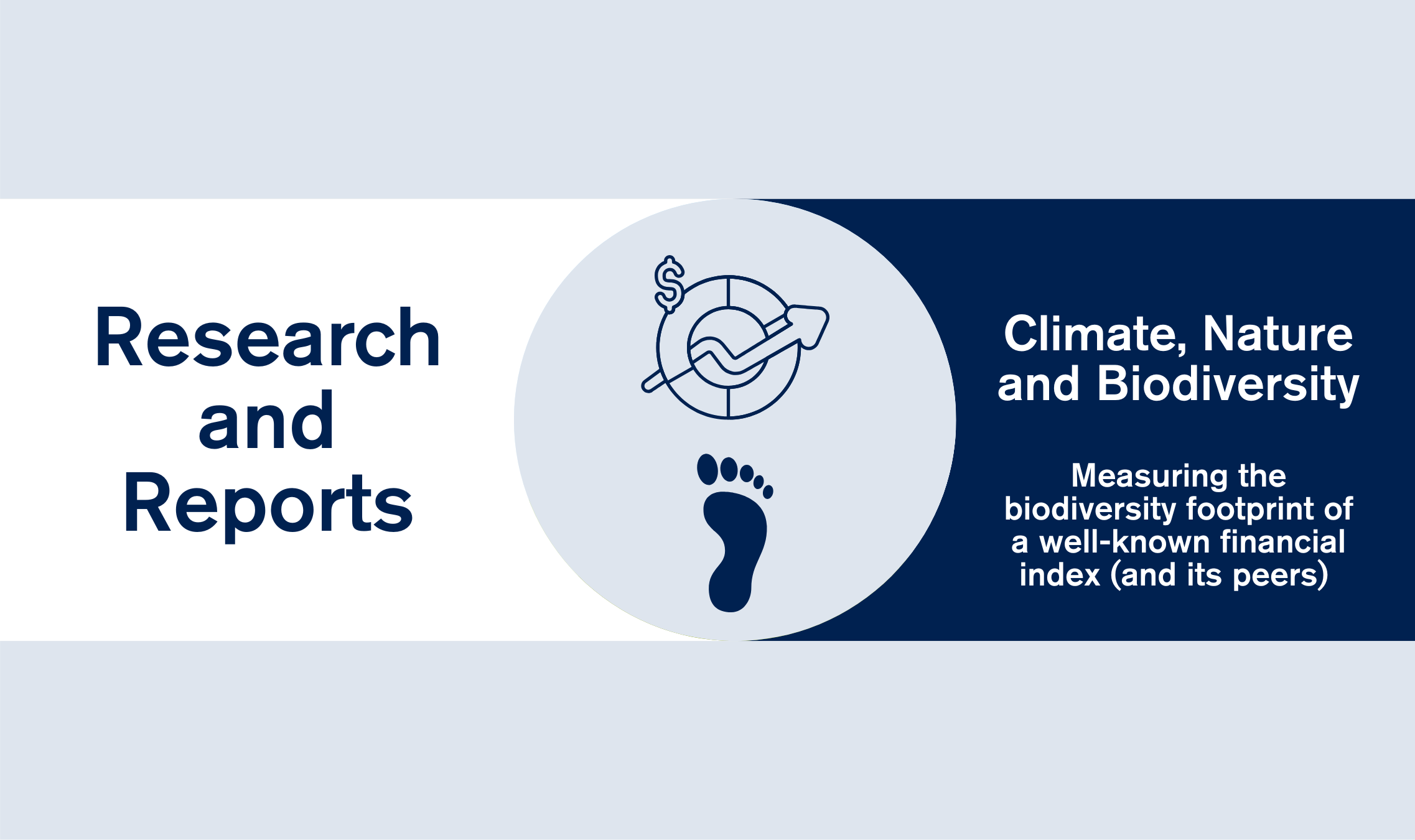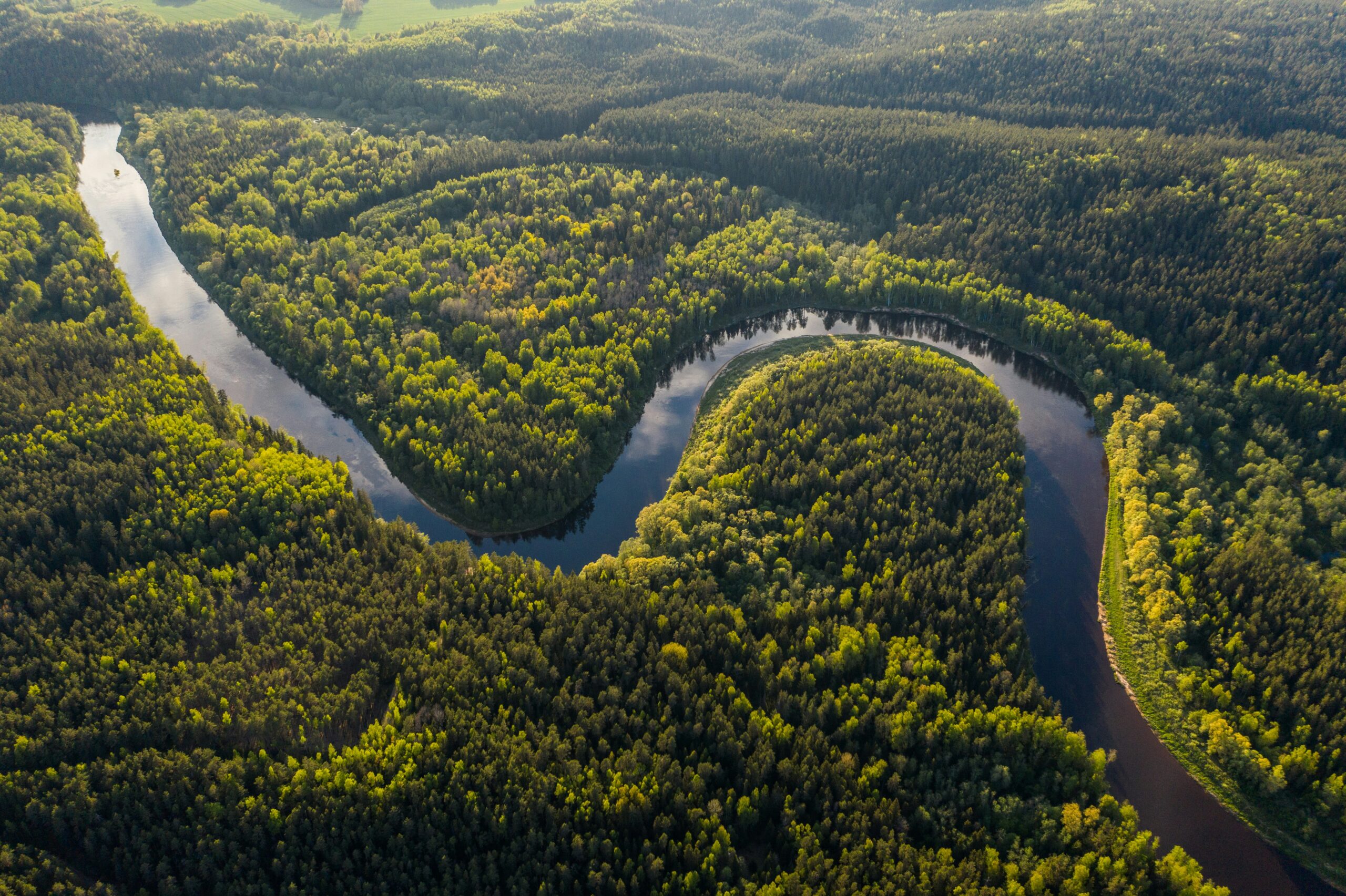Introduction
In our previous post, GIST Impact analysed the climate, nature and biodiversity risks of one of the world’s most well-known indices. This index serves as the benchmark for ca. USD 5 trillion in assets under management, covering approximately 85% of the global investable equities across 20+ developed markets and 20+ emerging markets countries.
GIST Impact found significant asset-level exposure to physical risks and proximity to areas of natural significance.
Let’s now take it one step further – by assessing the biodiversity footprint of this index.
Biodiversity Footprint
Readers may already be familiar with the concept of a carbon footprint. At a portfolio – or index – level, this is measured as the carbon emissions of the portfolio normalised by the market value of the portfolio, expressed in tons CO₂e per $ million invested.
A similar approach can be taken to measure a portfolio’s biodiversity footprint. But instead of measuring carbon emissions, this approach involves measuring the portfolio’s pressure on biodiversity. This pressure can be defined as Potentially Disappeared Fraction of species (PDF) – a metric preferred by ecological scientists that captures the risk posed to global species stocks in a given year as a result of an entity’s activities. This risk is measured across terrestrial, freshwater and marine realms; takes into account diverse kinds of species (mammals, birds, amphibians, plants, etc); and comprises the effect of eight drivers of activity, such as GHG emissions, water consumption, and pollution. Furthermore, the risk is geography-specific: all things equal, an entity will pose higher risks to a biodiversity-rich geography than a biodiversity-depleted one.
So what did we find?
In 2023, the biodiversity footprint of this index stood at 3.69E-10 PDF per $ million invested. This means that, if we treat this index as an investable portfolio, a $1 million investment means financing a potential extinction of 0.0000000369% of all global species. This is a 8.06% decrease on the biodiversity footprint in 2022, when the number stood at 4.00E-10.
0.0000000369% may not sound like a lot – but on a global level, neither is a $1 million investment. At a $10 billion investment – the size of a large, but far from the biggest – fund, the number stands at 0.000369%. Were all of the $5 trillion benchmarked against this index invested into it as a portfolio, it would be financing the potential extinction to 0.1845% of all global species. And the total size of global equity markets alone is well over $100 trillion.
This number, to be sure, requires some important caveats.
Firstly, while PDF represents the risk posed each year, not all of this risk materialises immediately. Pollution, for example, will affect species far quicker than climate change caused by GHG emissions, which takes place over decades. Still, this risk cannot be dismissed: only immediate action will prevent it from crystallising and causing irreversible damage.
Secondly, PDF is more reliable as a relative, rather than an absolute, measure of risk. At large enough scales, some of the model’s linear parameters can produce overstatements. As such, more informative insights arise when we analyse the contribution of individual drivers – or geographies – to the final PDF number.
As such, it becomes clear that GHG emissions (1.77E-10 PDF per $ million invested) and water consumption (1.28E-10 PDF per $ million invested) are the most significant drivers in 2023. This situation is reflected in 2022, when the contribution of GHG emissions stood at 1.97E-10 PDF per $ million invested, and that of water consumption at 1.34E-10 PDF per $ million invested. However, the contribution of waste generation and nitrogen pollution rose slightly between 2022 and 2023: 3.36E-11 PDF per $ million invested and 3.23E-10 PDF per $ million invested respectively in 2022, compared with 3.39E-11 PDF per $ million invested and 3.28E-10 PDF per $ million invested respectively in 2023. But these drivers’ relatively small contribution means that the broader trend of the overall risk is that of an annual decrease.
Similarly, we can see that risk is concentrated in certain geographies, such as the USA (1.57E-10 PDF per $ million invested in 2023), Australia (2.95E-11 PDF per $ million invested in 2023) and China (1.98E-11 PDF per $ million invested in 2023).
Finally, we can compare the biodiversity footprint of this index against its global peers. In 2023, the biodiversity footprint of another well-known index tracking the 500 leading US companies stands at 2.91E-10 per $ million invested; that of the index tracking the top 3000 US companies stands at 4.47E-10 per $ million invested; and that of the index tracking the top 100 UK companies stands at 7.43E-10 per $ million invested.
Land Conversion Equivalence (LCE)
To put this risk of extinction in other terms, we can also convert PDF into an amount of natural land loss that would have an equivalent impact on global species extinction. Since land transformation is one of the inputs into calculating PDF, it is possible to reverse engineer the PDF formula to estimate land transformation. While this is a rough approach and merely an indicative estimate, it nonetheless provides a more intuitive perspective of species extinction risk.
GIST Impact can therefore estimate that, for this well-known global index, 2,135m² – or 0.002135km² – of land are transformed from a natural to an urbanised state for every $1 million invested (about a quarter of a soccer field). Again, this may seem like a minuscule figure – but the key is to take the perspective of a more realistic investment. At $10 billion, this equates to a transformed area of 21.35km² – more than three times the total area flattened during the bombing of Dresden. At a $5 trillion, the total area stands at 10,675 km² – about twice as large as Moscow, the largest urban area in Europe.
Lessons Learned
So what does this tell us?
Firstly, measuring nature-related performance at scale is possible. Combining science-backed metrics – such as PDF – alongside established accounting approaches – such as footprinting – offers a pragmatic and forward-looking perspective of corporate sustainability for financial institutions.
Secondly, measuring nature-related performance at scale is necessary. Climate change is only one side of the coin. Nature is the other: it is the fabric that holds human civilisation together, providing essential services that nurture and protect our collective society. And it is clear that there are significant risks posed to nature and biodiversity that go beyond those posed to climate. Only those that take these risks into account will continue to thrive in the decades to come.






